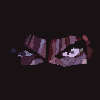  |
|
| View previous topic - View next topic |
| Author |
Message |
RampantCoyote
Demon Hunter

Joined: 16 May 2006
Posts: 546
Location: Salt Lake City, Utah
|
 Posted: Thu May 28, 2009 10:43 pm Post subject: Good 3D Dungeon Design Posted: Thu May 28, 2009 10:43 pm Post subject: Good 3D Dungeon Design |
[quote] |
|
Well, as I'm having to do a lot of level design and I'm not a particularly experienced level designer, I'm having to learn fast. My dungeons in FK are in full 3D, and I'm trying to make them visually appealing as well as functional. I can't just get away with the squat graph-paper designs of my D&D-playing days.
So - anybody here have some suggestions / opinions on designing appealing 3D dungeons? I'm looking for tips on texturing / geometry / puzzles / flow / etc.
Right now, some of the tips I'm accumulating are pretty much "duh" suggestions, but I'm looking for anything else that will speed me along my learning curve:
#1 - Make use of vertical space. Those squat dungeons of the Bard's Tale / Dungeon Master / Wizardry I - VII / Eye of the Beholder days don't cut it.
#2 - Have clean texture differences between walls, floors, and ceilings. Unless the dungeon is a cave, and it's supposed to be indistinct and confusing.
#3 - Lighting is critical
#4 - Try to show the player new goals / locations before they can get there. An inaccessible balcony or a doorway across a chasm, for example.
Anybody got some other ideas?
_________________
Tales of the Rampant Coyote - Old-School Game Developer talks Indie Games, RPGs, and the Games Biz
|
|
| Back to top |
|
 |
Ninkazu
Demon Hunter

Joined: 08 Aug 2002
Posts: 945
Location: Location:
|
 Posted: Fri May 29, 2009 12:44 am Post subject: Posted: Fri May 29, 2009 12:44 am Post subject: |
[quote] |
|
Have a good balance of wide open space and cramped areas. We like to see heterogeneity in our environments.
Think about the architecture of the area as possibly being the product of many years of construction and various iterations of design. What I mean is, you might have a core area that seems less modern and possibly run-down (or maybe even renovated/patched up) and as you work your way around, you see the change in time and design.
Make sure that as you progress through a dungeon that you use color to your advantage. If you are passing into the next critical area, you might want to change your palette.
Use the history of the building/environment/surrounding community to populate your dungeons with various pieces of artwork, furniture, etc. You don't want to go from a renaissance stone castle town to a red brick, boxy dungeon with art and clothes from the dark ages.
|
|
| Back to top |
|
 |
Verious
Mage

Joined: 06 Jan 2004
Posts: 409
Location: Online
|
 Posted: Sat May 30, 2009 3:27 am Post subject: Posted: Sat May 30, 2009 3:27 am Post subject: |
[quote] |
|
|
Have you considered procedurally generating the dungeons from predefined building blocks? This can greatly enhance the replay value of a game and decrease development effort. For procedurally generated content I recommend generating the seed value at the beginning of the game and storing its value with the save game, so the player does not feel they wasted their time exploring an area only to find out the area has completely changed when they return later or reload the game.
|
|
| Back to top |
|
 |
Hajo
Demon Hunter

Joined: 30 Sep 2003
Posts: 779
Location: Between chair and keyboard.
|
 Posted: Sat May 30, 2009 10:28 am Post subject: Posted: Sat May 30, 2009 10:28 am Post subject: |
[quote] |
|
3D invites to have structures like tunnels and bridges.
But actually we live pretty much in a 2D plane, due to gravity fixing us to the ground. Our buildings are just stacked planes. So I feel quite uncertain if 3D adds much to dungeons ... we use to keep all handles and switches in a height that they are easily reachable with hands.
Maybe this gives ideas, to have hidden switches in the ceiling, or at least unusually high?
|
|
| Back to top |
|
 |
RampantCoyote
Demon Hunter

Joined: 16 May 2006
Posts: 546
Location: Salt Lake City, Utah
|
 Posted: Sun May 31, 2009 7:03 pm Post subject: Posted: Sun May 31, 2009 7:03 pm Post subject: |
[quote] |
|
Great suggestions and ideas, folks, thanks!
I'm also looking up some online guides on beginning architecture - things like the use of space on psychology and stuff like that. Anybody got any links?
_________________
Tales of the Rampant Coyote - Old-School Game Developer talks Indie Games, RPGs, and the Games Biz
|
|
| Back to top |
|
 |
Hajo
Demon Hunter

Joined: 30 Sep 2003
Posts: 779
Location: Between chair and keyboard.
|
 Posted: Fri Jun 05, 2009 10:29 am Post subject: Posted: Fri Jun 05, 2009 10:29 am Post subject: |
[quote] |
|
A more general fact: It is easier to make maps of things that you are familiar with. Your creation cannot be greater than the image of it in your head before creation.
That will mean, if you try to design a level of any kind, and it's not a design you are already very familiar with (e.g. you are working as mechanic and the level is a space station full of machines), you should first research the field, take in the existing ideas and then try to combine them and take them a step further.
Architecture seems to be a good training though, since it includes so many aspects that places in games need ...
|
|
| Back to top |
|
 |
RampantCoyote
Demon Hunter

Joined: 16 May 2006
Posts: 546
Location: Salt Lake City, Utah
|
 Posted: Sun Jun 07, 2009 4:27 am Post subject: Posted: Sun Jun 07, 2009 4:27 am Post subject: |
[quote] |
|
Unfortunately, when designing fantastic sites that don't exist in the real world, it gets trickier. Sure, you can come across some analogs, but they might be strong.
I guess that's what concept artists are for, huh? :)
_________________
Tales of the Rampant Coyote - Old-School Game Developer talks Indie Games, RPGs, and the Games Biz
|
|
| Back to top |
|
 |
Hajo
Demon Hunter

Joined: 30 Sep 2003
Posts: 779
Location: Between chair and keyboard.
|
 Posted: Mon Jun 08, 2009 1:14 pm Post subject: Posted: Mon Jun 08, 2009 1:14 pm Post subject: |
[quote] |
|
| RampantCoyote wrote: |
I guess that's what concept artists are for, huh? :) |
if you have some at hand, definitely :) Otherwise people with a strong imagination in general, and the ability to dream up new things, not only variants of what already exists. But that isn't specific to 3D dungeon design ...
In Dungeon Master there were holes in the floor, also trapdoors. If you fell through them you actually entered the level below. There was a rope item that allowed to climb downward safely.
While this can still be done with a stacked 2D level design, it might be interesting in 3D levels. Particularly the idea of climbing up/down.
|
|
| Back to top |
|
 |
Verious
Mage

Joined: 06 Jan 2004
Posts: 409
Location: Online
|
 Posted: Mon Jun 08, 2009 1:29 pm Post subject: Posted: Mon Jun 08, 2009 1:29 pm Post subject: |
[quote] |
|
In the Legend of Zelda: A Link to the Past, there was at least one level that required you to fall through the floor to a lower level to get past an obstacle and solve the puzzle. This countermanded the rules previously established by the game; normally falling in a hole would cause damage. The game provided a hint by showing the level below using parallax scrolling instead of the normal black background. I'm not sure how you could provide a similar hint in a 3D game, since you always see the level below if your character looks down.
Don't be afraid to break the rules established by the game in a controlled fashion. If you do, always provide ample hints that something is amiss and never break the rules just for the sake of breaking the rules, always have a purpose.
|
|
| Back to top |
|
 |
RampantCoyote
Demon Hunter

Joined: 16 May 2006
Posts: 546
Location: Salt Lake City, Utah
|
 Posted: Mon Jun 08, 2009 5:39 pm Post subject: Posted: Mon Jun 08, 2009 5:39 pm Post subject: |
[quote] |
|
You are now making me consider what "rules" I have of my 3D worlds to break... I'm not sure. Something to think about.
An early shot in one dungeon I'm working on:

I guess falling IS considered a "bad thing" in Frayed Knights... and I haven't yet required it anywhere. A lot of what I'm learning is technical, based on the engines - how to set up things correctly so that the lighting and portaling works, etc. I've had to rip out a few sections and re-do them properly to get all that to work right.
Lighting is pretty critical (the way I'm doing it) in attracting movement. I find that I'm a bit like a moth - I'm attracted to lights, and will tend to walk that way. Likewise, open areas seem to attract movement better than closed, pinched-in, claustrophobic areas. So making sure the critical path has some bright lights at the end of each tunnel, and leads to wider, more open areas seem to be two useful tricks to help the player avoid getting lost.
'Cause it's a lot easier to get lost in 3D than in 2D.
I'm also finding it important to clearly mark doorways with different textures or whatnot. Otherwise, if you are looking at a doorway at an angle and see a wall on the other side with the same texture, it's hard to tell that there's a doorway there at all.
_________________
Tales of the Rampant Coyote - Old-School Game Developer talks Indie Games, RPGs, and the Games Biz
|
|
| Back to top |
|
 |
  |
Page 1 of 1 |
All times are GMT
|
|
|
You cannot post new topics in this forum
You cannot reply to topics in this forum
You cannot edit your posts in this forum
You cannot delete your posts in this forum
You cannot vote in polls in this forum
|
|

